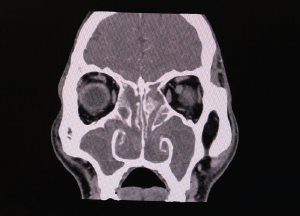Patient Nonattendance

© hxdbzxy / shutterstock.com
How many patients are no-shows for their appointments at rhinology clinics? According to a review by Benjamin Hunter, MD, of Southern Illinois School of Medicine in Springfield, Ill., the answer is 8%. That’s significantly lower than studies that have shown no-show rates between 24% and 28% in adult clinics.
Explore This Issue
June 2018But little work has been done in otolaryngology to quantify patient attendance in rhinology clinics. Dr. Hunter said just a half-dozen reviews have been conducted. Four of those were outside the U.S., all of them were single-institution studies, and no adult subspecialty comparisons have been made. That’s despite the issues that no-shows cause, including workflow disruption, suboptimal resource utilization, and delays for scheduled procedures.
Dr. Hunter and colleagues used a retrospective review of two academic centers to establish the profile of patients who do not attend their appointments. Insurance status and age were among the most notable factors in nonattendance. Some 19% of Medicaid patients did not show up for appointments, compared with 5% each for patients with private insurance or Medicare. While 11% of patients aged 50 or younger did not attend appointments, the number for those older than 50 was 5%.
Future research could help determine whether interventions targeting both patient profiles could help improve attendance.
Inequality in Otolaryngology Residency Interview Invitations

© Photographee.eu / shutterstock.com
When it comes to early-career physicians interviewing for otolaryngology residency slots, it’s a story of haves and have-nots.
Third-year resident Andrew Lee, MD, of Johns Hopkins Medicine in Baltimore, reported that 19% of applicants took up 38% of available interviews. Just 26% of all otolaryngology applicants took up half of all interviews. Out of all the specialties reviewed, otolaryngology had the highest percentage of applicants taking up 50% of all interviews.
The review was based on the Gini coefficient, a scale of 0–1 that is more typically used to describe income disparity within countries. The higher the coefficient, the more unequal the distribution.
The research found that otolaryngology is less unequal than all of the other reviewed specialties, but largely because so many applicants “hoard” interviews. In fact, the Gini coefficient among otolaryngology applicants was 0.43, compared to 0.72 for internal medicine and 0.84 for family medicine. Traditionally, factors like the expense and effort of multiple meetings limit the number of interviews applicants can hoard.
But the specialty’s perceived competitiveness mitigates those factors, essentially encouraging more people to take as many interviews as they can. Residency programs, however, can use conflicting dates to try to make applicants interview only for those programs in which they’re most interested.
New Nasal Valve Obstruction Treatment

© Karan Bunjean / shutterstock.com